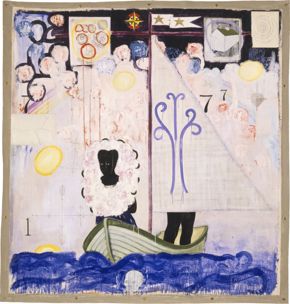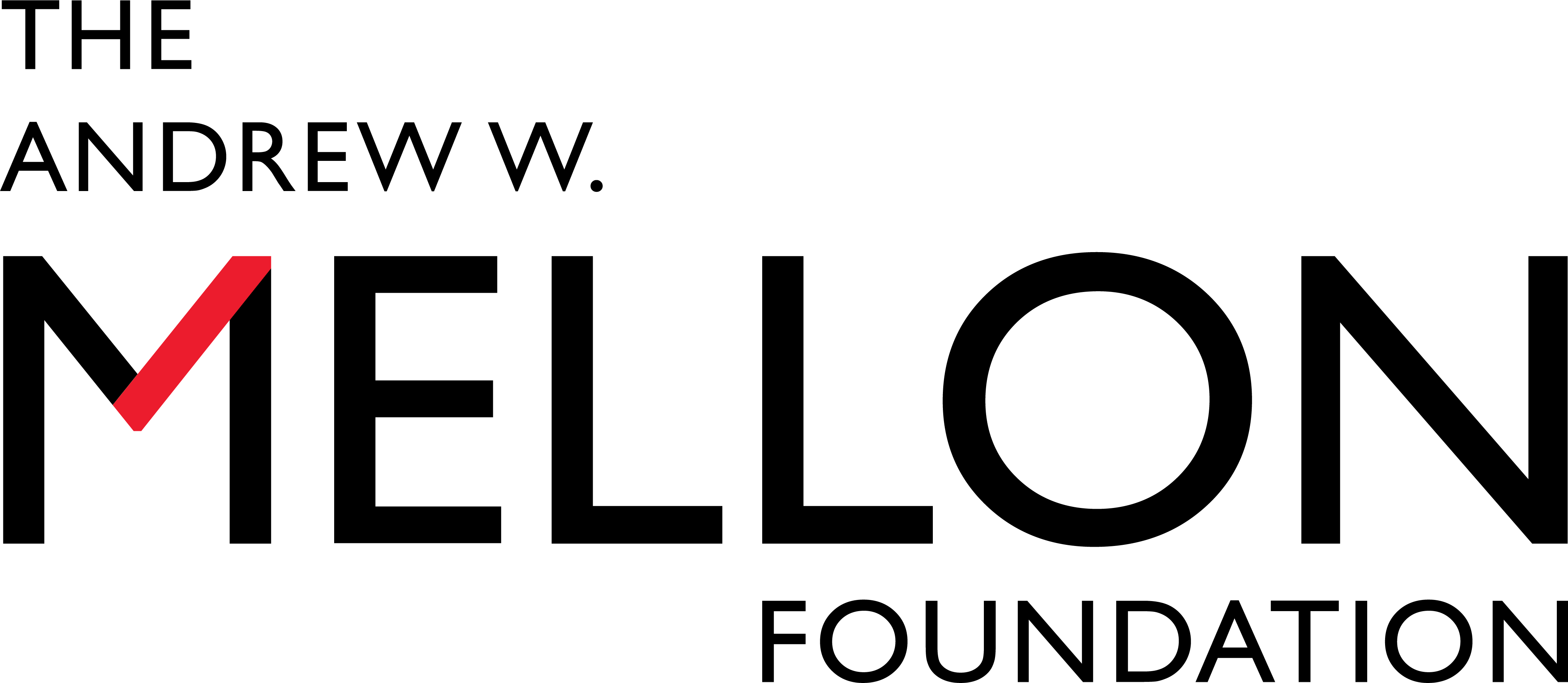Afro-Atlantic Art and Architecture from Slavery to the Present

Kerry James Marshall, Voyager, 1992, acrylic and collage on canvas, National Gallery of Art, Washington, D.C., Corcoran Collection (gift of the Women’s Committee of the Corcoran Gallery of Art). © Kerry James Marshall
Hank Willis Thomas, A Place to Call Home (Africa America Reflection), 2020, stainless steel with mirrored finish, edition 1 of 3, with 2 artist proofs, Jack Shainman Gallery, New York. © Hank Willis Thomas, courtesy of the artist and Jack Shainman Gallery, New York
Aaron Douglas, Into Bondage, 1936, oil on canvas, National Gallery of Art, Washington, DC, Corcoran Collection (museum purchase and partial gift from Thurlow Evans Tibbs, Jr., the Evans‐Tibbs Collection). © 2021 Heirs of Aaron Douglas / Licensed by VAGA at Artists Rights Society (ARS), NY
Elizabeth Catlett, Standing Mother and Child, 1978, bronze with copper alloy on wood base, the Museum of Fine Arts, Houston, Museum purchase funded by the African American Art Advisory Association. © 2021 Catlett Mora Family Trust / Licensed by VAGA at Artists Rights Society (ARS), New York
Manufacture des Gobelins, Paris, Os dois touros, da série Pequenas Ídias (The Two Bulls, from the series Small Indies), 1723–30, tapestry, Museu de Arte de São Paulo, Doação Samuel Ribeiro, Silvio Alvares Penteado, Antonio Sanches de Larragoiti Junior, Rosalina Coelho Lisboa de Larragoiti, Gladston Jafet, Indústrias Químicas e Farmacêuticas Schering S.A., Ernesto Walter, Omar Radler de Aquino, Guilherme Guinle, Henry Borden, Major Kenneth McCrimmon, Louis La Saigne, Moinho Santista S.A., Um anônimo, 1949.
Afro-Atlantic Art and Architecture from Slavery to the Present
Part of the conference Bound Away: Voyages of Enslavement in the Americas, this program is open to the public with free admission. The conference takes place at Rice University December 3–4, concluding with this session at the MFAH.
During the period of the transatlantic slave trade and beyond, enslaved Africans and their descendants were subjected to numerous atrocities, including separation from their families. In 2019, the website SlaveVoyages launched a database to help trace the passages of ships that transported slaves between ports of the Americas. In 2020, the database expanded to include additional ports of the United States, Spanish America, and Brazil.
Program
• “A Dilapidated House Is Better than a Bush: Security, Fortified Houses, and Architectural Innovations on the Gold Coast in the 18th and 19th Centuries” | Hermann von Hesse, Rice University
• “Questioning Archival Images in Rosana Paulino’s 2018 Collages” | Lynne Lee, Rice University
• “Turning Points of Afro-Brazilian Art: Agnaldo Manuol dos Santos, Rubem Valentim, and Mestre Didi” | Roberto Conduru, Southern Methodist University
• A conversation with the speakers and the audience | Moderator: Fabiola López Durán, Rice University
Plan Your Visit
This lecture takes place in Brown Auditorium Theater. Seating is limited, on a first-come, first-served basis only. On Saturdays, the Museum is open from 11 a.m. to 6 p.m.
Related Exhibitions
The conference coincides with Afro-Atlantic Histories at the MFAH and Kapwani Kiwanga: The Sand Recalls the Moon’s Shadow at Rice University’s Moody Center for the Arts.
Safety Guidelines Masks are required during programs in MFAH auditoriums. Capacities are limited. A risk of exposure to COVID-19 exists in any public setting. In the interest of your personal safety and community health, please observe all precautions set forth by the MFAH—learn more here.
Accessibility Questions or Requests? If you have any questions about accessibility resources in the Museum’s auditoriums, email accessibility@mfah.org or call 713.639.7300.
Learning and Interpretation programs receive generous funding from the Jerold B. Katz Foundation; Institute of Museum and Library Services; H-E-B; MD Anderson Cancer Center; The Brown Foundation, Inc.; Houston Livestock Show and Rodeo; Sharon G. Dies; Susan Vaughan Foundation; and additional generous donors.
The exhibition “Afro-Atlantic Histories” is co-organized by the Museum of Fine Arts, Houston, and the Museu de Arte de Sāo Paulo in collaboration with the National Gallery of Art, Washington, DC.
Major support provided by:
![]()

